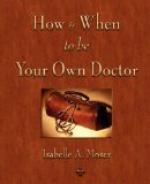So with sufficient churning in an acid environment, with enough time (a few hours), and enough enzymes, all the recently eaten proteins are decomposed into amino acids and these amino acids pass into the blood where the body recombines them into structures it wants to make. And we have health. But when protein chains are heated, the protein structures are altered into physical shapes that the enzymes can’t “latch” on to. The perfect example of this is when an egg is fried. The eggwhite is albumen, a kind of protein. When it is heated, it shrivels up and gets hard. While raw and liquid, it is easily digestable. When cooked, largely indigestable.
Stress also inhibits the churning action in the stomach so that otherwise digestible foods may not be mixed efficiently with digestive enzymes. For all these reasons, undigested proteins may pass into the gut.
Along with undigested starches. When starches convert best to sugars under the alkaline conditions found in the mouth. Once they pass into the acid stomach starch digestion is not as efficient. If starches reach the small intestine they are fermented by yeasts. The products of starch fermentation are only mildly toxic. The gases produced by yeast fermentations usually don’t smell particularly bad; bodies that regularly contain starch fermentation usually don’t smell particularly bad either. In otherwise healthy people it can take many years of exposure to starch fermentation toxins to produce a life-threatening disease.
But undigested proteins aren’t fermented by yeasts, they putrefy in the gut (are attacked by anaerobic bacteria). Many of the waste products of anaerobic putrefaction are highly toxic and evil smelling; when these toxins are absorbed through the small or large intestines they are very irritating to the mucous membranes, frequently contributing to or causing cancer of the colon. Protein putrefaction may even cause psychotic symptoms in some individuals. Meat eaters often have a very unpleasant body odor even when they are not releasing intestinal gasses.
Adding a heavy toxic burden from misdigested foods to the normal toxic load a body already has to handle creates a myriad of unpleasant symptoms, and greatly shortens life. But misdigestion also carries with it a double whammy; fermenting and/or putrefying foods immediately interfere with the functioning of another vital organ—the large intestine—and cause constipation.
Most people don’t know what the word constipation really means. Not being able to move one’s bowels is only the most elementary type of constipation. A more accurate definition of constipation is “the retention of waste products in the large intestine beyond the time that is conducive to health.” Properly digested food is not sticky and exits the large intestine quickly. But improperly digested food (or indigestible food) gradually coats the large intestine, making an ever-thicker lining that interferes with the intestine’s functioning. Far worse, this coating steadily putrefies, creating additional highly-potent toxins. Lining the colon with undigested food can be compared to the mineral deposits filling in the inside of an old water pipe, gradually choking off the flow. In the colon, this deposit can become rock-hard, just like water pipe scale.




